1.Ejina Populus euphratica forest

The Ejina Populus euphratica National Nature Reserve in Inner Mongolia is located in the Ejina Oasis, the center of Ejina Banner, Alxa League, Inner Mongolia. It is the hometown of Populus euphratica and the home of the desert. Populus euphratica is known as a hero tree because it is said that it “lives for a thousand years without dying, dies for a thousand years without falling, and remains immortal for a thousand years after falling.” There are different Populus euphratica landscapes from Yidao Bridge to Badao Bridge in the reserve. The desert scenic area of Badao Bridge is breathtaking.
2.Keshiketeng Stone Circle
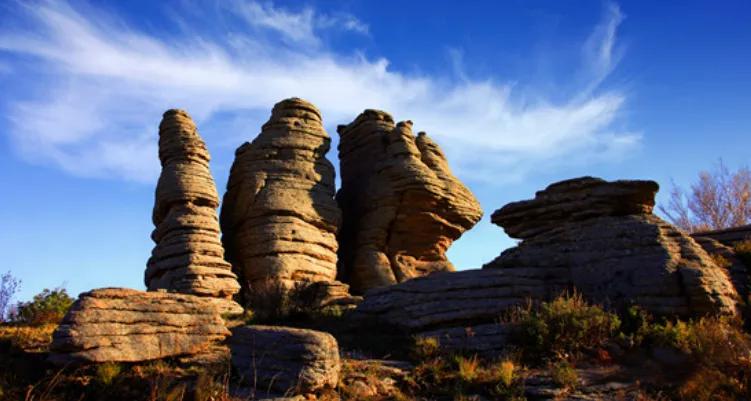
Keshiketeng Stone Array Scenic Area (formerly Ashatu Stone Forest Scenic Area) is located in the northeast of Keshiketeng Banner, Chifeng City, Inner Mongolia. Ashatu means “precipitous rocks” in Mongolian. These “ice stone forests” formed by erosion by glacial meltwater have overlapping peaks and charming scenery. Various stone statues such as “South Pillar of the Sky”, “Sister Peaks” and “Ice Great Wall” are vivid and accompanied by beautiful legends.
3.Genghis Khan Mausoleum Tourist Area
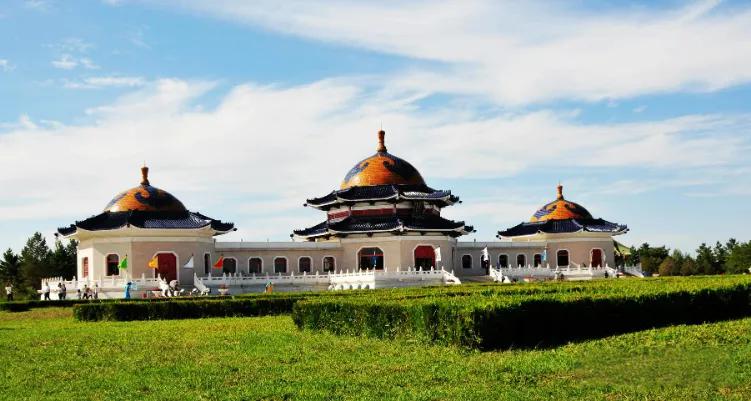
The Genghis Khan Mausoleum Tourist Area, located in Ejin Horo Banner, Ordos, Inner Mongolia, is the world’s largest tourist attraction with Genghis Khan culture as its theme, and the only tourist destination in the world that preserves the palace of Genghis Khan in the 13th century. With its beautiful grassland environment and mysterious cultural landscape, it demonstrates the majestic posture of the grassland emperor; with its rich cultural connotations and magical natural scenery, it reproduces the magnificent history of the Mongolian people and the great strategy of Genghis Khan, a great hero.
4.Xiangshawan
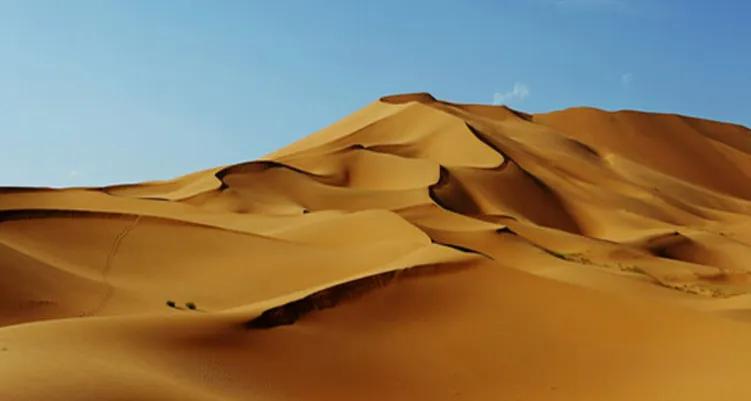
Xiangshawan Scenic Area is located in the Kubuqi Desert of Dalate Banner, Ordos City, Inner Mongolia. It is named because “the sand here can sing”. The sand in Xiangshawan is 110 meters high and has a slope of 45 degrees. It is crescent-shaped and forms a large sand hill echo wall. Xiangshawan got its name from this. The scenic area is divided into five parts: Fusha Resort Island, Liansha Resort Island, Yuesha Leisure Island, Xiansha Leisure Island, and Yilisha Resort.
5.China-Russia Border Tourism Area
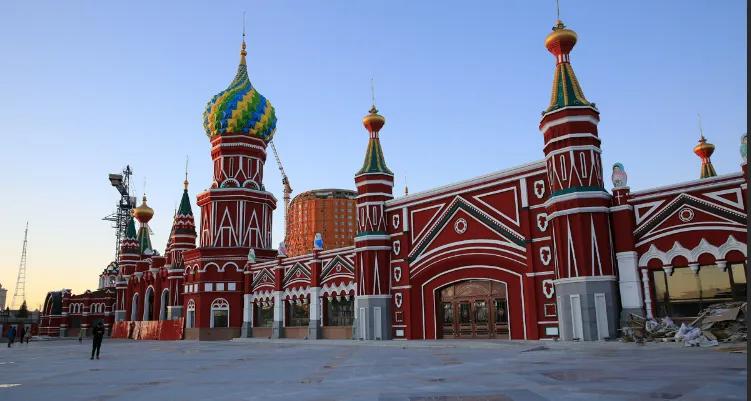
Manzhouli Sino-Russian Border Tourism Area is located in Manzhouli City, northwest of Hulunbuir Prairie, Inner Mongolia. It is adjacent to Daxing’anling in the east, Hulun Lake in the south, Mongolia in the west, and Russia in the north. The scenic area consists of the National Gate Scenic Area, Matryoshka Scenic Area, Chagan Lake Scenic Area and Sino-Russian Border Trade Tourism Area, integrating tourism, leisure and vacation, red education and Russian customs.
6.Arxan Chaihe Tourist Area

Arxan Chaihe Scenic Area, spanning Arxan City, Xing’an League, Inner Mongolia and Chaihe Town, Zhalantun City, Hulunbuir, is a forest ecological tourism scenic area with five major scenic areas: Rose, Tianchi, Shitang Forest, Tuofengling and Yimin River. Arxan’s full name is “Harun Arxan”, which is Mongolian and means “hot holy water” in Chinese. The scenic area is named after the river. Chaihe River, Chuoer River and their tributaries flow along the valley, with green mountains and lush vegetation.
7.Hasuhai
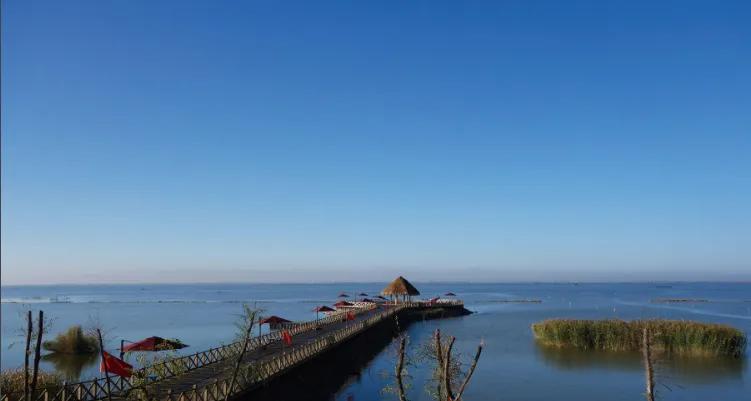
Hasuhai Lake is located in Tumote Left Banner, Hohhot City, Inner Mongolia. It is the abbreviation of Halawusuhai in Mongolian, which means Black Water Lake. The lake bottom is overgrown with weeds, the water is fertile, and various birds breed in the reed marshes on the lake surface. The lake is surrounded by Daqing Mountain in the north and farmland and pastures in the east, south and west. Hasuhai Lake is a natural lake, known as the “West Lake outside the Great Wall”.
8.Tengger Desert

The Tengger Desert is located in the southwest of Alxa Left Banner, Inner Mongolia. In Mongolian, “Tengger” means “sky”, which describes the desert as “as high and vast as the sky”. Local herdsmen say: “When you climb to the Tengger Desert, you are three feet away from the sky.” Mongolian herdsmen build their homes on the oases in the Tengger Desert. They migrate between oases, and humans and all things reproduce here together.
9.Badain Jaran Desert

The Badain Jaran Desert is located in the northern part of Alxa Right Banner, Alxa League, Inner Mongolia. It has unique and charming landscapes such as the world’s highest sand hills, spectacular singing sand areas, dotted lake oases, endless sand sea springs, and mysterious desert temples.
10.Mondsee
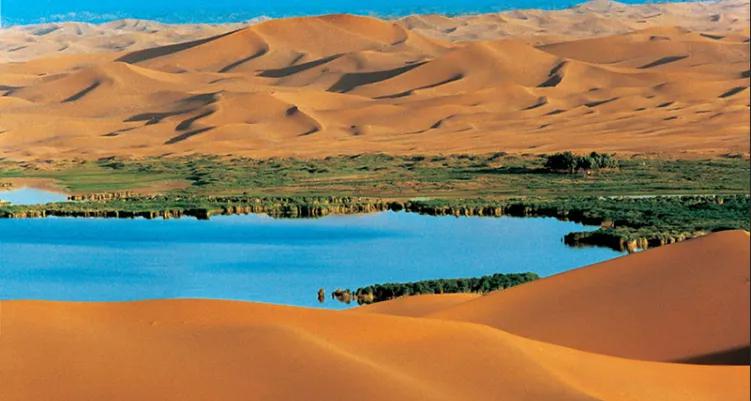
Moon Lake, located in Alxa Left Banner, Alxa League, Inner Mongolia, is a natural lake in the Tengger Desert and a completely pristine desert oasis. Local herdsmen call it “Moon Lake” and “China Lake” because the lake looks like a crescent moon quietly telling an ancient story from the east, and looks like a map of China from the sand dunes in the west. It is a “kingdom” of sand and water. The sky in the Tengger Desert is unusually blue. When the pure sky is reflected in the purer lake, it is so blue that it is fascinating.
11.Hongshan Yulongsha Lake

Hongshan Yulong Sand Lake International Ecological and Cultural Tourism Area is located in the northeast of Wudan Town, Wengniute Banner, Chifeng City, Inner Mongolia, and the western edge of the Horqin Sandy Land. The desert, sand lake, sand pine and whistling sand here are part of the Horqin Sandy Land, known as the “800-mile vast sea”. The lake is very large, with more than a dozen sand islands in the lake, with grass on the islands and birds in the grass, which is very unique. Popular movies such as “See You Tomorrow” and “The Immortality of All Things” were filmed here.
12.Wu Dang Zhao
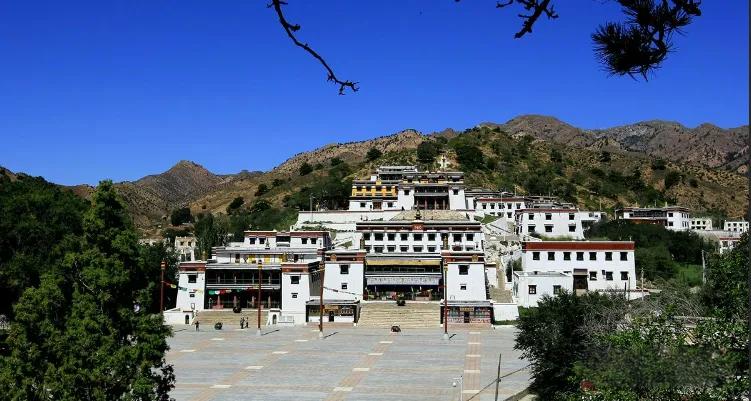
Wudangzhao is located deep in the Daqing Mountain in Wudang Valley, Jihuluntu Sumu, about 45 kilometers northeast of Shiguai District, Baotou City, Inner Mongolia. Wudangzhao was founded during the reign of Emperor Kangxi of the Qing Dynasty and is the largest Gelugpa monastery of Tibetan Buddhism in Inner Mongolia. It is known as one of the four famous temples of Chinese Lamaism along with the Potala Palace in Tibet, the Ta’er Monastery in Qinghai, and the Labrang Monastery in Gansu. Wudangzhao is a typical Tibetan Buddhist monastery style, with no unified central axis and each building is independent.
13.Dazhao
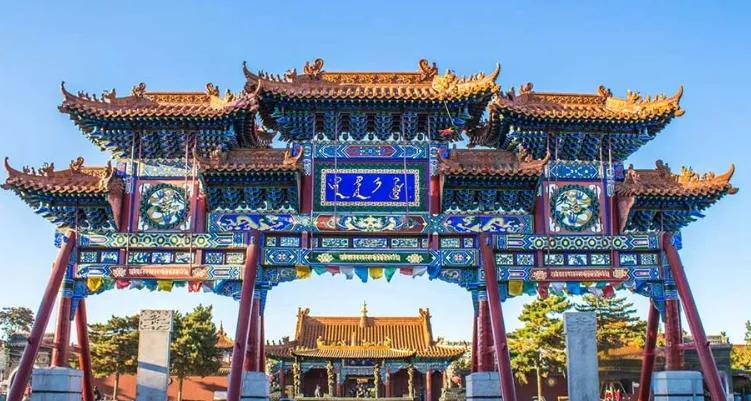
The Dazhao Historical and Cultural Tourism Area is located in Yuquan District, Hohhot City, Inner Mongolia. It houses buildings such as the Passing Hall, the Nine-Room Building, and the Buddha Hall. Among them, a silver-cast statue of Sakyamuni Buddha remains well preserved after four hundred years.
14.Zhaojun Museum
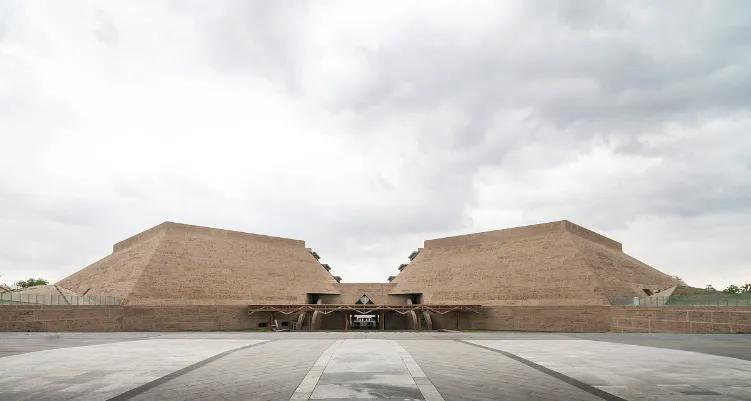
The Zhaojun Museum, also known as the Zhaojun Tomb, is located in Hohhot, Inner Mongolia. It was built in the Western Han Dynasty before Christ and was praised by scholars as “The Green Tomb Embracing Dai”. The tomb is shaped like an inverted bucket, 33 meters high, with a bottom area of about 13,000 square meters. It has a long history of more than 2,000 years and is one of the largest Han tombs in China.
15.Juyan Lake
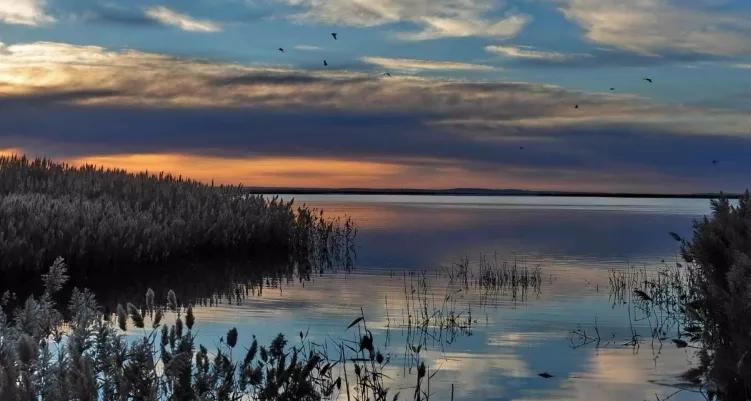
Juyan Lake is a lake located in the north of Ejin Banner, Alxa League, Inner Mongolia. It is long, narrow and curved, like a crescent moon. The Ejina River flows into the lake and is the main water source for Juyan Lake. Historically, Juyan Lake was very large and was one of the largest lakes in northwest my country. Today, it is mostly referred to as East Juyan Lake (Supo Nur).
16.Hulunbuir Grassland

Hulunbuir Grassland National Park is located in Hulunbuir City, Inner Mongolia. It is located in the heart of Hulunbuir Grassland, with the Morigele River Basin and Hailar River Basin as the center, east to Naji Forest Farm, west to Yihewula Scenic Area, mainly including the head station, Golden Horde, Huhe Nor, Baiyinhada, Yihewula, Summer Camp, Naji Forest Farm and Ewenki Sumu. Hulunbuir Grassland is a world-famous natural pasture, one of the four major grasslands in the world, known as the best grassland in the world, named after Hulun Lake and Beier Lake on the grassland.
17.Mordaoga National Forest Park
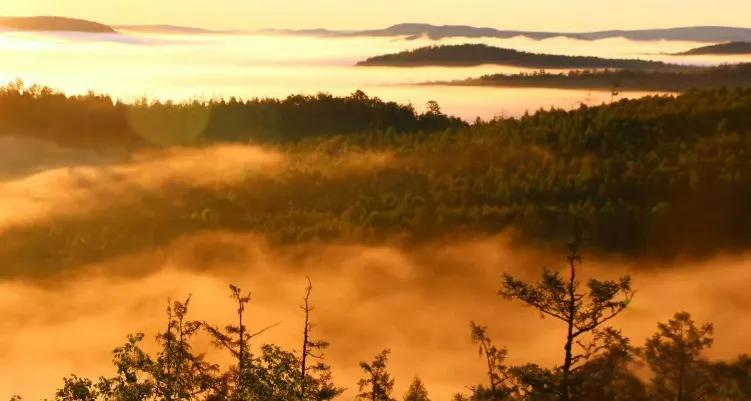
Inner Mongolia Mordaoga National Forest Park is located in Mordaoga Town, Ergun City, Hulunbuir City, Inner Mongolia. It is located in the hinterland of the primeval forest in the north of Daxing’anling Mountains. It is the last primeval forest of bright coniferous leaves in the cold temperate zone in China. The park’s slogan is “There is Xishuangbanna in the south and Mordaoga in the north.”
18.Kangbashi Tourist Area
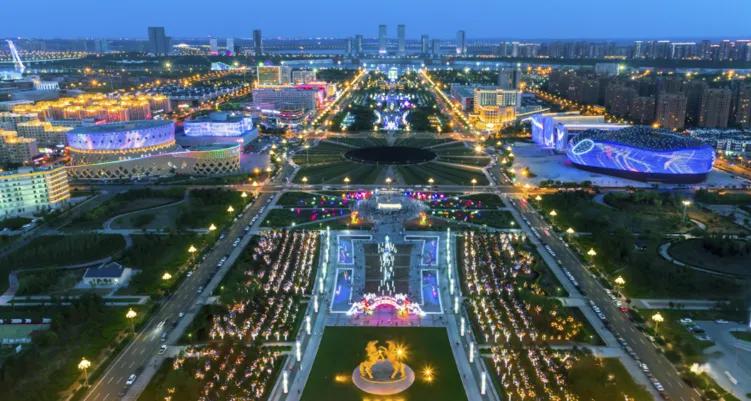
Kangbashi Tourist Area is located in Kangbashi New District, Ordos City, Inner Mongolia. Kangbashi is famous for its rapid rise from the wilderness to become a modern city. It is the seat of Ordos City Government. It has grotto buildings that reflect the Mongolian culture; it has the rare “Mongol Secret History Manuscript” corridor, which is the only one in China; it has large-scale antique red sandstone grottoes that amaze the world.
